| Article ID | Journal | Published Year | Pages | File Type |
|---|---|---|---|---|
| 912157 | Journal of Neurolinguistics | 2006 | 17 Pages |
In the present study, we used event-related potentials (ERPs) to examine the neurophysiological correlates of violations of word formation rules in German derivational morphology. To this end, we compared violations of the German noun forming morphemes -ung (violation of morphosyntactic category) and -heit/-keit (violation of prosodic constraints). Our main objective was to ascertain whether morphosyntactic category violations would differ from violations of prosodic constraints.For each type of incorrect suffixation, the data yielded an N400-like effect, but the processing of incorrectly derived words varies according to the type of violation: Effects for -ung- and -heit violations appeared approximately 200 ms earlier than for -keit-violations. Furthermore, the negativity effect for -ung was stronger and distributed over the whole scalp, whereas the effect for -heit and -keit is restricted to parietal electrodes. We interpret the differences as suggesting that different word formation restrictions play different roles in the processing of derived words, such that morphosyntactic restrictions are more salient than prosodic ones.
